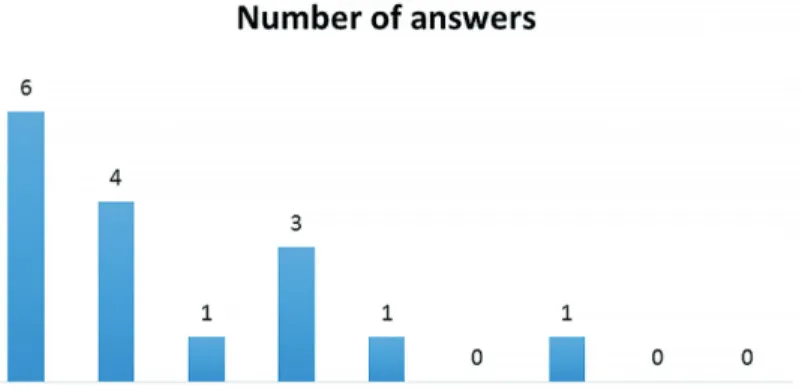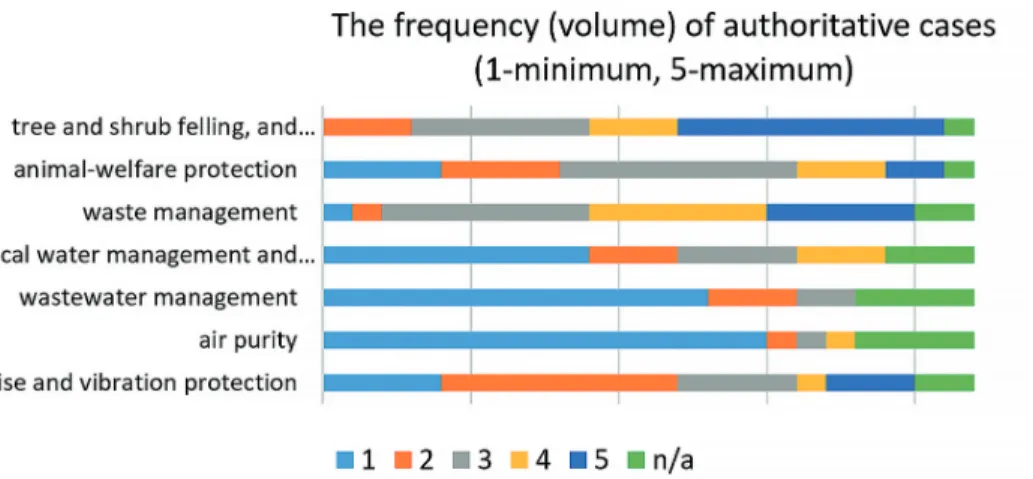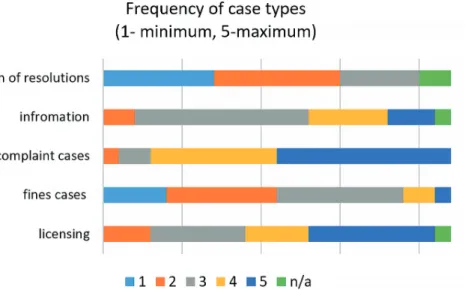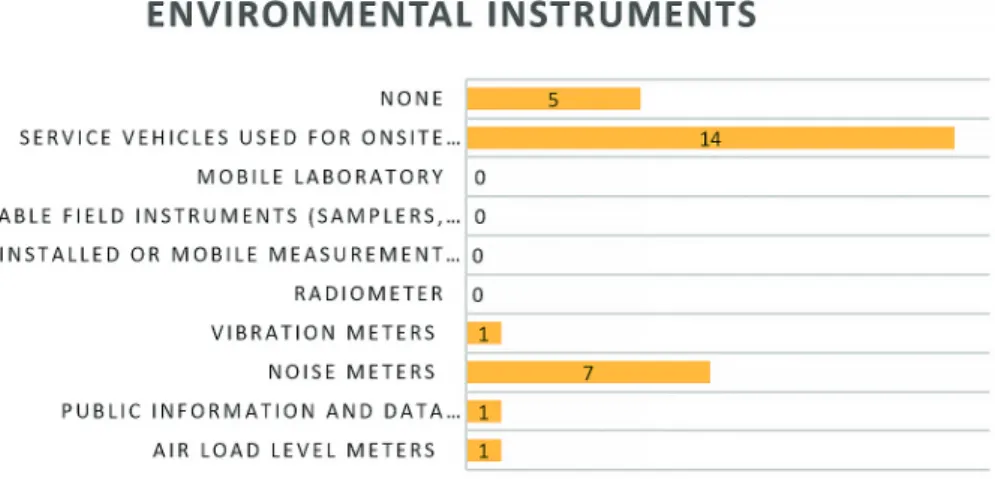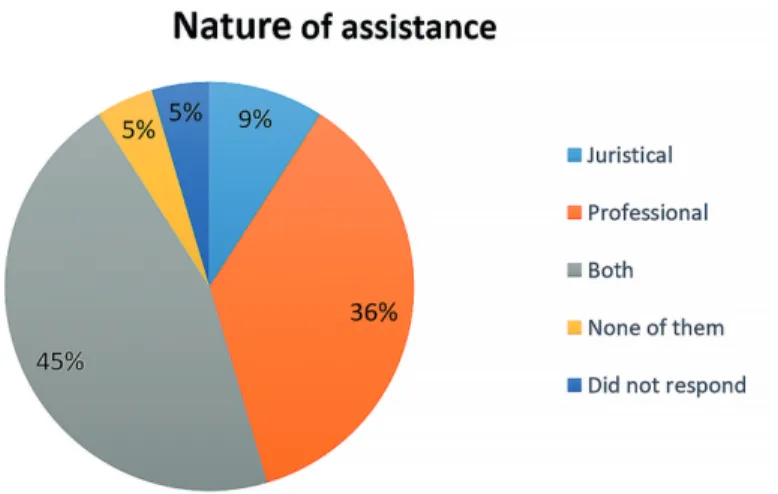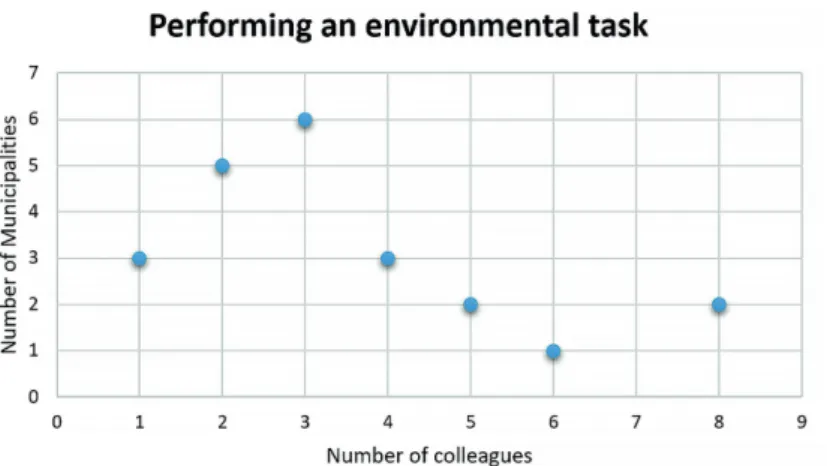Erika László
1Protection Capacities and Local Environmental Protection
A védelmi kapacitások és a helyi szintű környezetvédelem
Abstract
One of the fundamental areas of safety and security is environmental safety/secu- rity. In addition to and in cooperation with governmental organisations, citizens and municipalities also have a role to play. Today’s events have proved that the capacities are finite, so, it is not incidental what municipalities can undertake in the field of environmental protection. It is timely to examine this issue, as in the epidemic period of 2020, all areas of the protection sector need to review their capacities and know what the municipalities currently involved in protection administration will be capable to perform in the field of environmental protection and in what fields they will be prompted to seek the help of protection organisations. In this article, the author uses a questionnaire survey to provide an overview of the topic in order to examine the extent to which the principle of subsidiarity can be applied to the protection sphere.
Keywords: environmental protection, local government, municipalities, noise and vibration protection, air pollution, questionnaire survey
Absztrakt
A biztonság egyik alapvető területe a környezeti biztonság. A védelmi szervezetek mellett és velük együttműködve, ebben az állampolgároknak és a településeknek is szerepe van. Napjaink eseményei igazolták, hogy a kapacitások végesek, ezért nem mellékes, hogy a települések a környezetvédelem területén mit tudnak felvállalni.
Ennek a kérdésnek a vizsgálata azért időszerű, mert a 2020. évi járványt követő időben
1 Doktoranda, Nemzeti Közszolgálati Egyetem, Közigazgatás-tudományi Doktori Iskola – University of Public Service, Doctoral School of Public Administration Sciences, PhD student, e-mail: laszlo.erika@uni-nke.hu ORCID: https://orcid.
org/0000-0001-6347-9491
a védelmi szféra minden területének át kell gondolnia a kapacitásait, és ismernünk kell, hogy a védelmi igazgatási feladatokban is részt vevő önkormányzatok jelenleg hogy állnak a környezetvédelem területén, és mely témákban lesznek kénytelenek a védelmi szervezetek segítségét igénybe venni. A cikkben a szerző egy kérdőíves felmérés segítségével ad helyzetképet a témáról annak érdekében, hogy a védelmi szféra számára vizsgálható legyen, hogy mennyiben tud majd érvényesülni a szub- szidiaritás elve.
Kulcsszavak: környezetvédelem, önkormányzat, település, zaj- és rezgésvédelem, légszennyezés, kérdőíves felmérés
1. Introduction
The World Health Organization (WHO) report2 estimates that environmental damage is responsible for 12–18 per cent of fatalities in 53 countries in the WHO European region.
The public administration tasks of global environmental problems, as well as the load and damage to the environment, are also present at local governments.
Investigating the local emergence of global problems is therefore an extremely important task in terms of what tasks local government administrations have in this context and how prepared they are for it. It is also important what tools and crite- ria are used to perform these tasks. The mapping of the latter has become timely nowadays, because in crises affecting the entire world and afterwards, there must be a ‘redistribution’ of protection tasks, and for this, one needs to know the capacities and the current situation.
In this research, I conducted a questionnaire survey of municipalities with a pop- ulation of more than 14,000 (N=46) on how global issues and the environmental responsibilities they have within their overall tasks appeared, what areas of environ- mental responsibilities they have and what the most typical case types are, whether the major environmental problems of municipalities are really caused by noise and air pollution control issues.
I also intend to assess what tools and equipment they have to fulfil their envi- ronmental authoritative tasks, and how many local governments have their own business organisations that perform environmental tasks in any form within the territory of the given municipality; furthermore, how many environmental officials work in average at municipalities with a larger population, whether they have an environmental committee, and how many of its members received education in environmental protection. At the same time, I was also seeking an answer to what kind of environmental investments were assessed by the municipalities over the last five years. In the course of this article, I intend to examine these issues, for which I have used scholarly literature, statutory and municipal regulations, and a questionnaire survey. All this should be performed in order to be able to draw
2 A. Prüss-Ustün, J. Wolf, C. Corvalán, R. Bos and M. Neira, Preventing disease through healthy environments: a global assessment of the burden of disease from environmental risks, WHO. Available: https://apps.who.int/iris/bitstream/
handle/10665/204585/9789241565196_eng.pdf?sequence=1&isAllowed=y (04. 01. 2020.)
conclusions on the capacities and future actions based on this situation, because in the future, the activities of protection organisations in this field are likely to be kept to a minimum and the principle of subsidiarity, which is based on municipal- ities, must prevail.
In order to answer the above questions and to interpret the results of the ques- tionnaire survey, one needs to summarise the essence of local governance and its relationship with environmental protection.
2. The system of self-governance in Hungary
It is a known fact that the evolution of today’s system has long historical roots. In Hungary, after the era of dualism, when the emergence of the bourgeois (civic) state began to gain ground, judiciary entities worked as local organisations of public admin- istration; they operated in the capital, Budapest, and in the counties and cities with jurisdiction, In the framework of a continuously changing system.3
The National Assembly adopted Act LXV of 1990 on local self-governments on August 3, 1990. By this, it created a system of self-governance to replace the council system. At present, two types of local/self-governments can be distinguished in Hungary. One is the local (municipality-level) government and the other is the regional/territorial (county) level government. Municipality-level governments operate in villages, towns, district seat towns, cities with county rights and in the districts of the capital Budapest. Among the municipalities, the only one that has both a muni- cipality level and a regional/territorial government is the capital, Budapest.4 In the context of the Hungarian legal system, the tasks of municipality-level and regional self-governments relevant to the protection of the environment are specified in the Act on environmental protection5 (hereinafter referred to as ‘Kvt.’) as the following.
Municipality-level governments play a significant role in the implementation of local environmental tasks, which include the creation and enforcement of environmental protection legislation, the fulfillment of authoritative tasks assigned to their competence and the elaboration of a municipal environmental protection program. The body of representatives of a municipalities-level government is responsible for, among other things, establishing a smog alert plan, setting regulations by decrees for air pollution caused by household activities (incineration of dry leaves and garden waste), contrib- uting to the process of defining ecologically sensitive areas concerning air pollution, declaring certain areas to have increased protection against noise, designating quiet zones and establishing local noise protection regulations.
In order to perform its duties in relation to the protection of the built and natural environment, the county self-government drafts the county environmental program, takes a stand and expresses its opinion on the decrees and environmental programs of the municipality-level municipalities. Generally, tasks directly relating to the population
3 Erika László, ‘Magyarország vízügyi igazgatásának fejlődéstörténeti áttekintése a kiegyezéstől napjainkig,’ Pro Publico Bono – Magyar Közigazgatás no 4 (2019), 83, 87.
4 Act CLXXXIX of 2011 on Hungary’s local governments.
5 Act LIII of 1995 on the general rules of environmental protection, Sections 46 and 48.
are primarily carried out by the municipalities, while county self-governments have more tasks in planning and coordination.6 For the past thirty years, local governments have been the local initiators, implementers and inspectors of countless national environmental programs. The analysis of the accumulated experience is therefore timely. In the case of environmental problems at municipal level, practices appro- priate to their characteristics had to be developed. All of them, of course, cannot be scrutinised in the context of this article; so, three of the most pressing issues I have dealt with in the survey are air pollution, noise and vibration hazards.
3. Air pollution as an environmental problem
Air pollution has a serious impact on people’s health, but it also harms the built envi- ronment. For example, in the environmental assessment7 of the amendment of the spatial arrangement plan of Pest County, one could read that the air quality status of the Central Hungarian Region had recently deteriorated in municipalities with transit traffic and congestions. Limit values for NO2 (nitrogen dioxide) and PM10 (particulate matter8) continue to be exceeded. In this area of Hungary, particularly transit traffic causes significant environmental damages.
The air quality of municipalities is influenced by the amount of pollutants emit- ted, the level of build-up of municipalitiess and also the pollution from remote areas due to transmission processes. Air pollution directly and indirectly damages the environment and human health.
In 2017, the European Environment Agency considered three pollutants to be the most significant in terms of the health impacts of air pollution: fine particulate matter, nitrogen dioxide and near-ground ozone.9 The EU also sets high standards for volatile organic compounds (VOCs), nitrogen oxides including nitrogen dioxide, sulfur dioxide, ammonia (NH3), heavy metals and benzene. The Resolution No. 1386/2013/
EU of the European Parliament and the Council10 reports that significant reduction in emissions of pollutants into the air have been achieved in recent decades. However, there is a fact that gives reasons for serious concern: according to the report of EEA (European Environment Agency),11 in 2016 in Hungary, the exposure to PM2.512caused the premature death of 12,100 persons, nitrogen dioxide (NO2) the death of 770 persons and ozone the death of 380 persons. In 2011, the World Health Organization
6 András Bencsik and Attila Barta, ‘A települési önkormányzatok szerepe a környezetvédelmi igazgatás átalakult rend- szerében,’ Pro futuro 7, no 1 (2017), 85.
7 Pest megye területrendezéisi terv módosítás – Környezeti értékelés [Amendment of the Spatial Arrangement Plan of Pest County – Environmental assessment], Térinfo, Budapest, January 2020. Available: www.pestmegye.hu/images/2020/
Teruletrendezesi_terv/Kornyezeti_ertekeles_2020.pdf (02. 02. 2020. ), 58.
8 Particles with a diameter of less than 10 micrometers.
9 ‘Air Pollution,’ European Environment Agency. Available: www.eea.europa.eu/themes/air/intro (04. 12. 2019.)
10 https://eur-lex.europa.eu/legal-content/HU/TXT/PDF/?uri=CELEX:32013D1386&from=EN (30. 10. 2019.)
11 Air quality in Europe – 2019 report, EEA Report No. 10/2019. European Environment Agency, 2019. Available: www.
eea.europa.eu//publications/air-quality-in-europe-2019 (20. 11. 2019.), 68.
12 PM2.5 are very small particles of a pollutant having a diameter of 2.5 micrometers (0.0025 mm) or less. In most cases they originate from combustion.
considered traffic noise to be the second largest risk factor in Western Europe, after the diseases caused by airborne dust (particulate matter).
In reviewing13 the implementation of environmental policies, Hungary considers among its major tasks the reduction of particulate matter emissions from solid fuel combustion in private households for heating and the reduction of emissions from vehicles in urban areas. According to the Central Statistical Office data14 of 2016, one quarter (258,000) of the more than one million employees working in the capital of Hungary shuttle to work from Pest County, which greatly influences the appearance of transport-related pollutants and noise.
4. Noise and vibration as an environmental problem
Nowadays, at least 10,000 people in the European Union are prone to premature death due to noise-induced illnesses. In 2012, for example, a quarter of the European population was exposed to noise levels above the limit values. In Hungary, the muni- cipalities were responsible for drafting the strategic noise maps and action plans for the municipalities in the agglomeration of Budapest, and for the towns with a population of over 100,000; in case of Budapest the Capital’s Self-Government was responsible.
In the case of major transport facilities, these maps had to be prepared by an organ- isation designated by the Minister for Transport. As of May 2017, the Herman Ottó Institute Nonprofit Ltd. is responsible for the preparation of strategic noise maps as the (legal) environment have changed.15 On the other hand, it is the responsibility of municipalities to declare certain areas to be highly protected from noise, to designate quiet areas and to establish local noise regulations.
In addition to air pollution and noise and vibration impacts, waste management,16 water quality protection, water management, among others, cause significant problems.
Here, too, the question arises as to what causes difficulties to municipalities in performing their environmental tasks, what means they have to resolve them, what investments have been made for environmental protection and whether they have suitably qualified personnel. I conducted a questionnaire survey to map the basic situation.
5. Presentation of the questionnaire survey
During my study, I have reviewed and used literature, documents, European Union resolutions, reports, legislation, directives and Hungarian local government decrees, as well as data of the Central Statistical Office (CSO). In addition to the literature review, I have conducted a questionnaire survey of 46 municipality-level governments
13 ‘A környezetvédelmi politikák végrehajtásának felülvizsgálata. Magyarország,’ Európai Bizottság. Available: https://
ec.europa.eu/environment/eir/pdf/factsheet_hu_hu.pdf (23. 11. 2019.)
14 Budapest. Gazdaság és társadalom, KSH. Available: www.ksh.hu/docs/hun/xftp/idoszaki/pdf/budapest.pdf (05. 12. 2019.)
15 Government Decree 280/2004. (X.20.), section 1, paragraph (3).
16 Júlia Hornyacsek – Erika László, ‘A hulladéklerakás környezetterhelő hatásai és az ellene való védekezés lehetőségei a településeken és a védelmi szférában,’ Bolyai Szemle no 2 (2015), 155.
in Hungary with a population of more than 14,000 persons. I have conducted the survey for the Central Hungarian Region17 in order to obtain an overview of the envi- ronmental activities in this area.
The survey was sent to the email addresses of a total of 46 municipalities in the country, all of which were urban municipalities with a population of over 14,000. The survey was done anonymously, so they are deliberately not named in the article to avoid identification. Of the 46 municipalities, 22 (n=22) returned the questionnaire electronically, so I can take into consideration the data with this in mind.18 The ques- tionnaire survey examined the percentage of environmental activities to the total number of municipal activities. The responses had to be indicated as a percentage on a predetermined ‘from-to’ scale, in which the values rose by 5 per cent (1–5 per cent, 5–10 per cent, and so on). Out of the 46 municipalities surveyed, I was able to eval- uate 16 responses, the proportion of which I would like to illustrate in Figure 1 below.
Figure 1. Number of answers
Source: compiled by the author
On the top of each column, one can read the number of municipalities that decided to indicate the given value. Out of the 22 questionnaires returned, a total of 16 responded to this question. It can be observed that out of the 16 responding munic- ipalities, 6 local governments municipalities indicated that only 1 to 5 per cent of their total activity is related to environmental protection. In case of 4 municipalities,
17 A planning-statistical region defined based on the territorial unit for statistical purposes (NUTS), defined by a regulation of the European Parliament and of the Council. By this region I mean the unit of the planning-statistical area existing before January 1, 2018, which was created in Hungary in order to make the Hungarian territorial units comparable with the regions located within the individual Member States of the European Union. As of January 1, 2018, as per Government Decision No. 2013/2015 (XII. 29.), although the Central Hungarian Region split into Pest County and Budapest, however, based on the above, in this article I examine the territorial unit exisiting before January 1, 2018 and use its name. The reason for this is the validation of the certainty of anonymity.
18 It is an important lesson learnt that the time of sending the questionnaire coincided with the post-election trans- formations, so many people did not respond to the questionnaire due to the change in their responsibilities and competences. It is advisable to schedule these researches for a more problem-free period.
this value is between 5–10 per cent, 1 municipality judged this value to be between 10–15 per cent, in 3 cases 15–20 per cent, while in 1 case each, 20–25 per cent and 30–35 per cent were marked.
In the following section of the survey, the responders were asked to rate on a scale of 1 to 5, which environmental areas cause the most work for the municipality authori- ties. With regard to environmental cases, I was interested in the frequency (volume) of authoritative cases related to noise and vibration protection, air purity, wastewater man- agement, local water management and water law, waste management, animal-welfare protection, tree and shrub felling, and the replacement thereof. A value of 1 (minimum) was used to designate the environmental area with the least authoritative work and a value of 5 (maximum) to designate the most frequent environmental authoritative issues. The notation ‘n/a’ in Figure 2 indicates the number of non-responding munici- palities. It is evident that the least number of authoritative cases in municipalities were local water management, water law, wastewater, air purity and noise and vibration issues. In contrast, most paperwork comes from waste management, tree and shrub cutting, but animal husbandry and animal welfare are also significant.
Figure 2. The frequency (volume) of authoritative cases (1–minimum, 5–maximum)
Source: compiled by the author
This may be due to the fact that, as a first instance authority for air purity protection matters, the local environmental authority acts instead of the municipality. As far as municipalities are concerned, the air pollution control authoritative issues related to the implementation of the smoke alert plan are those where the mayor (in the capital, the chief mayor) acts first. As per Government Decree 306/2010. (XII. 23.),19 the district (metropolitan district) offices of the Budapest and county government offices have additional first instance jurisdiction in matters of air purity protection.
19 Government Decree 306/2010. (XII. 23.) on air protection, Section 36, Paragraphs (2)–(3).
Given that the first instance authority are divided between several authorities, there are fewer air purity protection issues left for municipalities. This does not mean that the municipalities are not affected by this problem, but only that it emerges less in cases requiring authoritative paperwork.20
The authoritative tasks of noise and vibration protection issues have been shared between the municipalities and the territorially competent environmental authorities based on paragraph 4 of Government Decree 284/2007. (X. 29.). As shown in Figure 2, noise and vibration protection issues are present in municipal authoritative activities to a visibly lesser extent but to a greater extent than air pollution control issues.
Section 24 of Government Decree 72/1996. (V. 22.) on exercising water man- agement authoritative powers lists the local government’s authoritative powers in connection with water management that require the permission of the notary of the municipality. The tasks of municipalities related to water and water facilities of Act LVII of 1995 on water management can be found in Section 4. The survey shows that in the Central Hungarian Region, the interviewed municipalities face relatively few tasks of these case types, which may be related to the municipalities’ involvement with waters. Contrary to the above, Figure 2 clearly shows that municipalities are more involved in waste management, animal husbandry and animal welfare, as well as tree and shrub logging and replacement.
In the next section of the survey, I was interested in the frequency of case types, which I also wanted to survey on a scale of 1 to 5.
Figure 3. Frequency of case types
Source: compiled by the author
20 It was also confirmed by my interview with three employees.
Figure 3 shows that most case types consist of dealing with complaint cases, respond- ing to them and licensing. Information and fines cases are present at a moderate level, while the provision of resolutions is the area in which the municipalities have the least responsibility based on the questionnaire responses. The notation ‘n/a’
in Figure 3 indicates the number of non-responding municipalities as compared to the 22 questionnaires returned.
During the questionnaire survey, I also sought to find out what kind of tools and devices local governments have in order to carry out their tasks related to environmental protection, as well as their ability to carry out independent envi- ronmental measurements. Municipalities had to choose from a pre-compiled list of assets that they had, and they could choose several from the list. By adding an
‘other’ and a ‘none’ category, besides the devices listed, I have given the opportu- nity for the respondents to become aware of unique (not listed) devices and cases with no devices at all.
In the ‘other’ category, respondents indicated GPS navigation and, in two cases, a camera, which is not shown separately in Figure 4 below. In the list I provided, air load level meter, public information and data acquisition system, noise meters, vibration meters, radiation meters, stationary or mobile measuring networks, portable field instrumentation (samplers, drills, and so on), mobile laboratory and service vehicle (for onsite inspections) could be indicated. Based on the survey, the following responses were obtained, which I would like to illustrate in Figure 4.
Figure 4. Use of environmental instruments
Source: compiled by the author
Figure 4 shows that the highest number of marks was given to service vehicles used for onsite inspections, which are present in 14 municipalities, representing 48.28 per cent of the respondents. This is followed by noise meters, with 7 marks (24.14 per cent vibration meters (3.45 per cent public information and data acquisition
system (3.45 per cent) and air load level meters (3.45 per cent) with one mark each. According to the survey, in the municipalities where service vehicle was available, there were five other measuring instruments besides the vehicles, such as noise measuring devices, public information and data acquisition equipment, GPS navigation and camera. In contrast, in the case of five municipalities (17.24 per cent) no devices were available to carry out onsite environmental inspections.
This may be due to the lack of expertise or occasional contractual cooperation of companies with environmental profiles with the municipalities.
In this context, I wanted to assess how many municipalities have their own institution/business organisation that performs and assists in the environmental tasks of the municipalities. The responses of the 22 municipalities completing the questionnaire showed the following. 32 per cent (7) of the respondents said that they do not have an environmental institution, while 68 per cent (15) have an institution.
The main profile of these institutions is not limited to carrying out tasks related to the environment. They usually perform many other tasks in the life of municipalities, such as road management, real estate management, specialised industrial activities, playground construction and maintenance, road and utility construction, car-parking operation, deep and building works and so on.
Among the institutions operated by the responders there was also an associa- tion dedicated to the protection of animals. Environmental activities include water network operation, maintenance, tree and public green space maintenance, planting and care of plants, collection and removal of illegally abandoned waste, selective waste collection and awareness raising.
These institutions are said to have their main responsibility in the field of environ- mental protection primarily for providing physical assistance. They provide little expert and professional assistance, while they do not provide legal (juristical) assistance at all.
Local governments tend to seek legal and professional assistance from other state organisations. Based on the information from scholarly literature, I also wanted to assess from which state (governmental) institutions most of the governments ask for help (Figure 5), and whether the request for help in such cases is of legal or rather professional character (Figure 6). During the survey, I provided the possibility to mark seven fields, with two additional categories.
Similarly to the results21 found during the literature review, my survey showed that local governments primarily turn to the regionally competent county government offices for professional advice. Based on the results shown in Figure 5, there is a clear primacy of government offices in providing assistance.
The second place is held by the territorially competent disaster management and water directorates, which is followed by their superior entities. Two other responders, who indicated the ‘other’ category, identified the neighboring municipalities and NFCSA22 as sources of professional assistance. Respondents could mark multiple organisations during the response.
21 Mihály Fónai, ‘A településméret és típus hatása a helyi környezeti politikára,’ in A települési környezetvédelem elméleti és gyakorlati megközelítései, ed. by Orsolya Bányai and Attila Barta (Budapest: Gondolat Kiadó, 2018), 90–117.
22 National Food Chain Safety Authority.
Figure 5. Number of assistance requested by municipalities (from other state organisations)
Source: compiled by the author
45 per cent of the respondents (10 municipalities) would ask for help from state entities, they had both legal and professional questions, 36 per cent (8 municipali- ties) only indicated the professional area, while 9 per cent (2 municipalities) rather needed legal assistance. One responder answered that it did not need either legal or professional help, while in one case, I did not receive an answer to this question;
these make up 5–5 per cent of the respondents.
Figure 6. The nature of the assistance requested by the municipalities
Source: compiled by the author
During the questionnaire survey, I also sought to find out the average number of employees with an environmental qualification in the municipalities with a popu- lation of more than 14,000. I would like to illustrate the results of the survey with Figure 7 below.
Figure 7. Number of persons performing environmental protection tasks
Source: compiled by the author
The vertical axis of the figure shows the number of responses from municipalities relating to number of personnel projected to the horizontal axis. The figure clearly shows that in the case of 6 municipalities, the number of employees performing environmental tasks is 3. More than 4 persons can only be found in the case of alto- gether five municipalities.
An important question is whether municipalities have a committee that deals with environmental protection in a given municipality. There are environment com- mittees at 77 per cent (17) of the 22 responding municipalities, but my research did not address whether these committees are purely environmental or are part of some other committee.23 However, I did mention how many of the members of the environ- mental committee have environmental qualification. Only 15 of the 22 municipalities that returned the questionnaire answered this question; from the fifteen cases, in five cases none received environmental education, in seven cases one had environmental education, while in two cases two had environmental education, and in one case, three had environmental education in the committee.
Financial opportunities determine many things. Therefore, in the questionnaire I also mentioned whether the municipalities have an environmental protection fund and a municipal environmental protection program required in Point b) of Paragraph (1)
23 See in greater detail in: Gábor Kozma, ‘A környezetvédelem helye a helyi önkormányzatok képviselőtestületi bizottsági struktúrájában,’ In Környezet és energia a mindennapokban, ed. by István Lázár (Debrecen: MTA DAB Földtudományi Szakbizottság, 2016), 29–36.
of Section 46 of Act LIII of 1995.24 This issue was already covered by another study25 in 2013. In a study done at that time, the author pointed out that, despite the fact that this rule dates back many years and should be revised from year to year, there are still municipalities where the environmental program is simply missing. My survey, too, reveals that these deficiencies still exist in the Central Hungarian Region.
Out of the 22 responding municipalities, two did not have any environmental program and two have no environmental fund. In most environmental programs, the respondents reported that these programs can be found on the municipality’s website or in the mayor’s office. Most of the environmental programs uploaded to the websites were prepared by external companies.
It reveals much what investments the municipalities have made. In terms of investments, the survey was carried out by examining seven major areas used in the measurements of CSO: wastewater treatment, air pollution control, waste manage- ment, soil and groundwater protection, noise and vibration protection, landscape and nature protection, and research and development. The survey focused on the environ- mental investments made by local governments in the last five years (2014–2019).
The municipalities could provide several answers to the question; the number of investments according to the answers are shown in Figure 8:
Figure 8. Number of environmental investments in the 22 local governments surveyed
Source: compiled by the author
According to the figure, most of the investments were made in the area of noise and vibration protection in the region(s) that I investigated. In the second place, one can find landscape and nature protection, waste management and sewage
24 Act LIII of 1995 on the general regulations of environmental protection.
25 Viktor Varjú, ‘A települési önkormányzatok környezetvédelmi orientáltsága,’ Comitatus: Önkormányzati Szemle, no 213 (2013), 21–36.
treatment. This is followed by investments in air pollution and soil and groundwa- ter protection. In the case of four municipalities, they were burdened with other investments, therefore, they had no environmental investment in the last five years.
With regard to environmental investments, noise and vibration protection, landscape and nature protection, waste management and sewage network construction are the areas where physical action by municipalities can remedy the problems ‘easier’.
With regard to the problems of air pollution control, this task becomes much more difficult due to the delocalised nature of the pollutants (mentioned above) in the municipalities. The problems of air pollution control are caused by the population, the traffic and the factories located in the municipalities, which cannot be overcome by environmental investments uniformly and efficiently by the municipalities due to the fragmentation of municipalities. A solution in this area could be to define restrictive environmental regulations. In addition, besides stricter environmental standards for the plants, tendering support could help to promote environmental investments in this area.
6. Summarised conclusion
It can be concluded from the questionnaire survey that relatively few environmental tasks are performed by municipalities compared to their overall tasks. This may be due to the fact that most of the authoritative tasks are performed by the territorially competent environmental authorities, so, the tasks related to this area are obviously less. According to the survey, most paperwork is done on waste management, tree and shrub cutting, and animal husbandry and animal welfare. The occurrence of problems can be explained by the large amount of waste concentrated in small areas, the small amount of green space and the high number of pets.26 Most cases fall into the case type of licensing, but there are many cases that belong to the types of handling and responding to a complaint case, or possibly fining.
With regard to environmental tools and devices, it seems that local governments rather need and use opportunities to obtain external assistance, since not too many of them have devices other than noise meters. The lack of measuring tools may also be due to the fact that the municipalities responding to the survey have few officials with environmental education and, within this, the range of officials who use or can use such devices is even narrower. The same applies to environmental programs.
Obviously, they seek assistance from the territorial/regional environmental authorities as public authorities. The request for assistance covers both professional and legal matters, however, it is possible that professional issues dominate within this. During the survey, I have reviewed the municipal environmental programs uploaded to the internet. It showed that most of the local governments produced these documents using third party entities. In many cases, environmental programs were included in
26 According to a statistical survey, in 2018, Hungary ranked 7th out of the 24 European countries surveyed, with households with at least one dog. Source: www.statista.com/statistics/515475/dog-ownership-european-union-eu-by-country/
(09. 12. 2019.)
integrated urban development strategies. These indicate that the number of environ- mental officials at the local governments is not yet high enough.
Of course, it is important to note that municipalities are not the same. Some even lack the basic requirements, while others have greening, bird-friendly and composting programs, Local Agenda 21 programs, climate strategy and a tree register. This trend can be observed according to other studies,27 too.
In order to compare various researches, it would be worthwhile to conduct such a survey on more and deeper issues, also at the national level.
Through the questionnaire survey, one could receive a comprehensive picture of the environmental tasks of municipalities and the conditions of their implementa- tion. These results raise the question of the extent to which environment protection is present in the education, training and further training of those working in public administration, and whether there are officials in local governments who could sub- mit innovations in the field of environment protection, promoting the issues of our environment. All of these notions are subject to further research.
References
Bencsik, András – Barta, Attila: ‘A települési önkormányzatok szerepe a környezet- védelmi igazgatás átalakult rendszerében.’ Pro futuro 7, no 1 (2017), 79–93. DOI:
https://doi.org/10.26521/profuturo/2017/1/4749
Fodor, László: ‘Települési környezetpolitika komplex megközelítésben.’ In A tele- pülési környezetvédelem elméleti és gyakorlati megközelítései, ed. by Bányai, Orsolya – Barta, Attila. Budapest, Gondolat Kiadó, 2018. 69–88.
Fónai, Mihály: ‘A településméret és típus hatása a helyi környezeti politikára.’ In A települési környezetvédelem elméleti és gyakorlati megközelítései, ed. by Bányai, Orsolya – Barta, Attila. Budapest, Gondolat Kiadó, 2018. 90–117.
Hornyacsek, Júlia – László, Erika: ‘A hulladéklerakás környezetterhelő hatásai és az ellene való védekezés lehetőségei a településeken és a védelmi szférában.’ Bolyai Szemle no 2 (2015), 155–174.
Kozma, Gábor: ‘A környezetvédelem helye a helyi önkormányzatok képviselőtestületi bizottsági struktúrájában.’ In Környezet és energia a mindennapokban, ed. by Lázár, István. Debrecen, MTA DAB Földtudományi Szakbizottság, 2016. 29–36.
László, Erika: ‘Magyarország vízügyi igazgatásának fejlődéstörténeti áttekintése a kiegyezéstől napjainkig.’ Pro Publico Bono – Magyar Közigazgatás no 4 (2019), 80–105. DOI: https://doi.org/10.32575/ppb.2019.4.4
Varjú, Viktor: ‘A települési önkormányzatok környezetvédelmi orientáltsága.’ Comitatus:
Önkormányzati Szemle, no 213 (2013), 21–36.
27 László Fodor, ‘Települési környezetpolitika komplex megközelítésben.’ In A települési környezetvédelem elméleti és gyakorlati megközelítései, ed. by Orsolya Bányai and Attila Barta (Budapest: Gondolat Kiadó, 2018), 69–88.
Internet sources
‘Air Pollution.’ European Environment Agency. Available: www.eea.europa.eu/themes/
air/intro (04. 12. 2019.)
Air quality in Europe – 2019 report, EEA Report No. 10/2019. European Environment Agency, 2019. DOI: https://doi.org/10.2800/822355
‘A környezetvédelmi politikák végrehajtásának felülvizsgálata. Magyarország.’ Európai Bizottság. Available: https://ec.europa.eu/environment/eir/pdf/factsheet_hu_hu.pdf (23. 11. 2019.)
Budapest. Gazdaság és társadalom. KSH. Available: www.ksh.hu/docs/hun/xftp/ido- szaki/pdf/budapest.pdf (0505”. 12. 2019.)
Pest megye területrendezéisi terv módosítás – Környezeti értékelés [Amendment of the Spatial Arrangement Plan of Pest County – Environmental assessment], Térinfo, Budapest, January 2020. www.pestmegye.hu/images/2020/Teruletrendezesi_terv/
Kornyezeti_ertekeles_2020.pdf (02. 02. 2020. )
Prüss-Ustün, A. – Wolf, J. – Corvalán, C. – Bos, R. – Neira, M.: Preventing disease through healthy environments: a global assessment of the burden of disease from environmental risks. WHO. Available: https://apps.who.int/iris/bitstream/
handle/10665/204585/9789241565196_eng.pdf?sequence=1&isAllowed=y (04. 01. 2020.)
